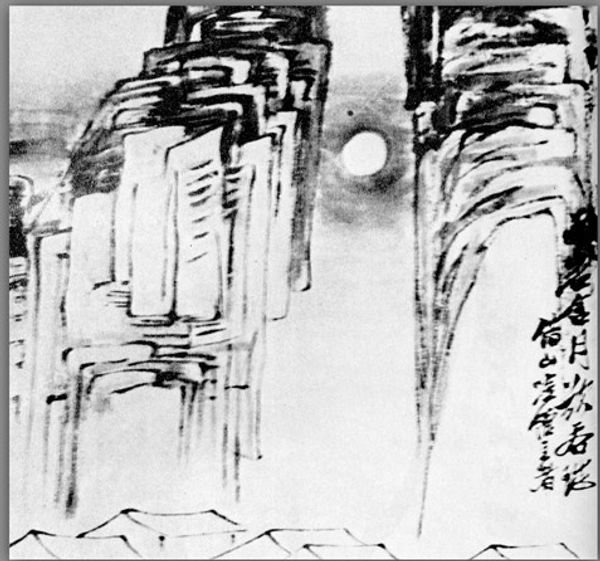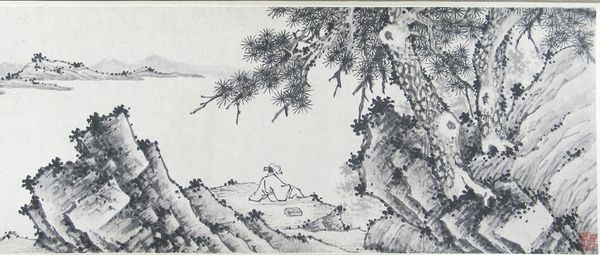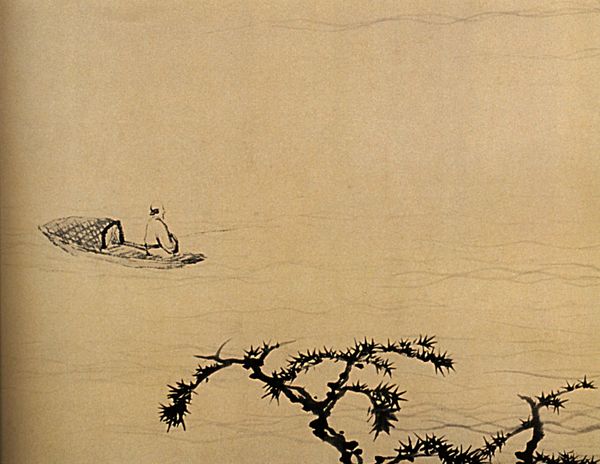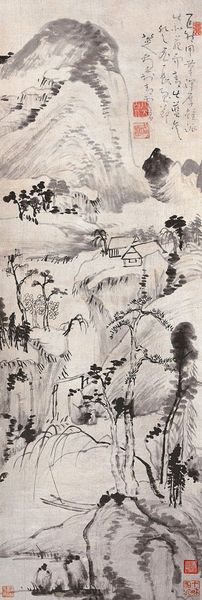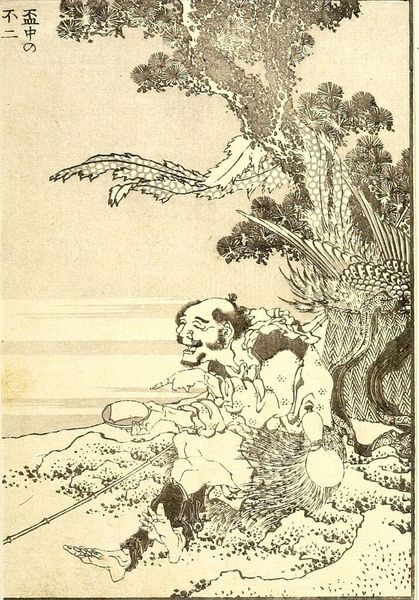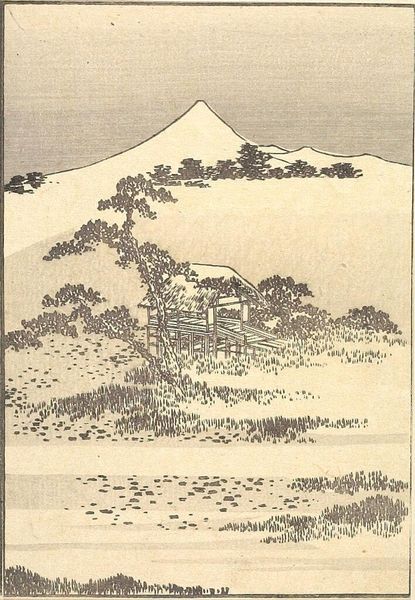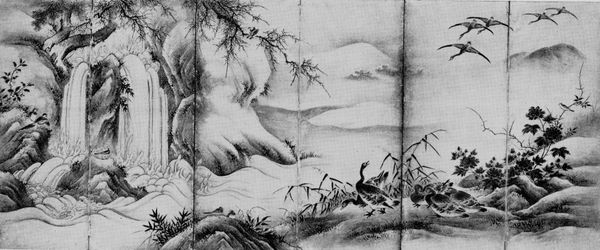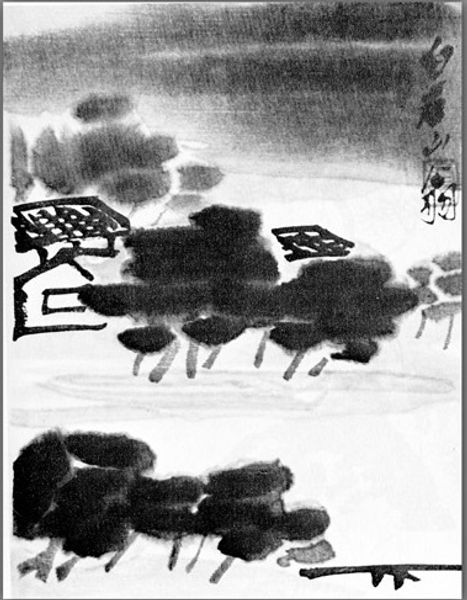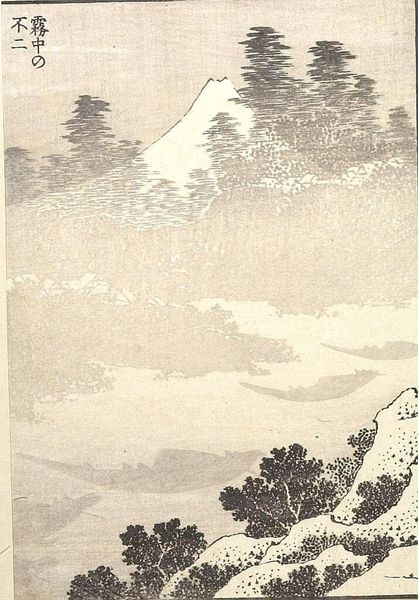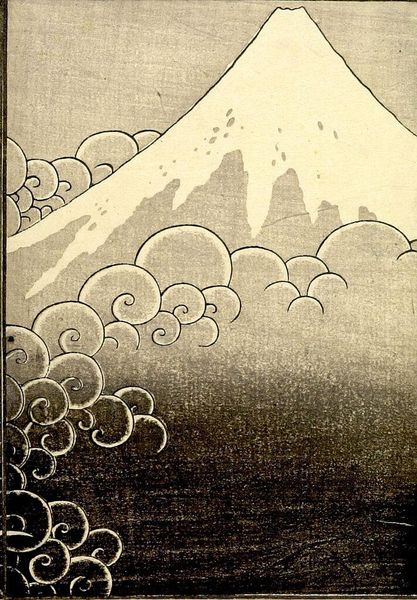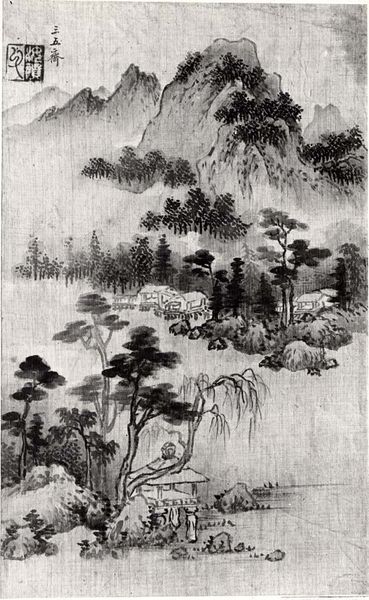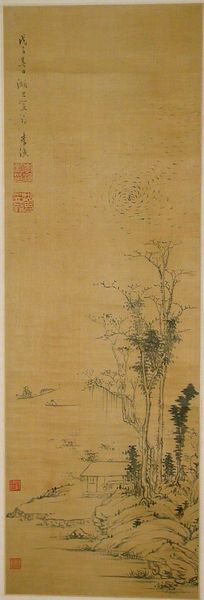
drawing, ink
#
drawing
#
organic
#
ink drawing
#
asian-art
#
landscape
#
figuration
#
ink line art
#
organic drawing style
#
ink
#
forest
#
ink drawing experimentation
#
plant
#
line
#
calligraphy
Copyright: Public domain US
Curator: Qi Baishi’s "Cold Night," created around 1910, presents a lone figure beneath a stark moon rendered in ink. There's an immediate sense of melancholy in its spare composition. Editor: Yes, the heavy blacks of the landmass contrast intensely with the wispy grays used for the sky; this dramatic division focuses my attention on the figure—who seems bundled against some elemental harshness. I am curious, though, about the means used to produce such contrasts in the density of the ink. Curator: As a prominent figure of 20th-century Chinese painting, Qi Baishi often looked to nature and everyday life for inspiration. This piece aligns with the literati tradition, emphasizing personal expression through calligraphic brushwork, a concept closely tied to Chinese social history and the importance placed upon scholarly artists. Editor: It also strikes me how accessible ink was and remains; from the grindstone to the final artwork, its production represents continuous engagement with physical materials, each decision having consequences. Did Qi Baishi's specific ink choices reflect socio-economic realities of the time? Curator: Possibly. Access to higher quality ink might have signified status, and using the medium to depict ordinary scenes also served as a subtle commentary on shifting cultural values. The choice to portray such stark subject matter at night invites viewers to find beauty in austere realities. Editor: Agreed; the bare branches suggest a material rawness that’s beautifully emphasized by the texture of the paper itself. Looking at the landscape through ink forces us to question our relationships to nature through readily available materials—perhaps suggesting a sort of grounded humility toward making processes. Curator: The calligraphy provides critical contextual information, offering both a title and Qi Baishi's own reflections about solitude. I'm drawn to consider this artist’s place in history—to interpret that personal solitude in light of wider socio-political trends shaping early 20th-century China. Editor: Considering "Cold Night", I am more attentive to the tangible, physical implications inherent in landscape and figuration, reminding us that the art lies within not just concept, but the active processes required to produce an idea materially.
Comments
No comments
Be the first to comment and join the conversation on the ultimate creative platform.

